Over the winter much time has gone into preparing for this event: coppicing alder, sawing the trunks, moving the wood into piles close to the kiln for drying, and splitting the wood. Last week the kiln was progressively loaded over last week, with the final load happening during the regular Sunday workparty.
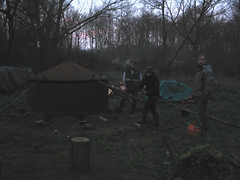 I arrived at the Meadow Lane crossing just after six: a little late. Out of breath I hurried over the level crossing, where a Goldfinch was singing, to see Sandy pushing a wheelbarrow along the path towards the Delta Gate. As I caught my breath, I only caught up with Sandy as he joined Ruby and several others at the bench by the Delta Gate. Many of the folk on the BTCV GNVQ level 1 course had turned up at (literally) the crack of dawn.
I arrived at the Meadow Lane crossing just after six: a little late. Out of breath I hurried over the level crossing, where a Goldfinch was singing, to see Sandy pushing a wheelbarrow along the path towards the Delta Gate. As I caught my breath, I only caught up with Sandy as he joined Ruby and several others at the bench by the Delta Gate. Many of the folk on the BTCV GNVQ level 1 course had turned up at (literally) the crack of dawn.In the Delta it was cold with a heavy dew, perhaps a hint of frost dissipating. There was plenty of birdsong: a Willow Tit by the gate, and a Song Thrush going full pelt about half way along the main ride. Over the left there was a hint of mist. By the kiln, the setting full moon could just be seen through the trees.
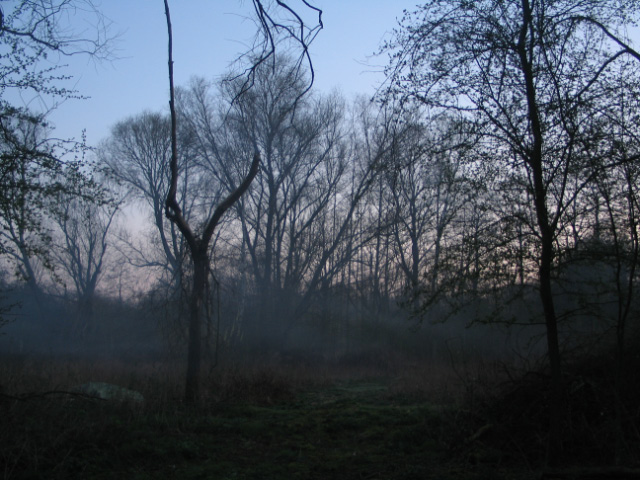
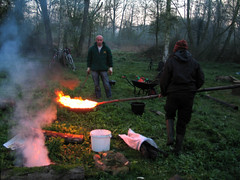 Then we lit the kiln! This is, and looks, spectacular. A rag soaked in petrol is attached to the end of a long straight stick, set alight and pushed into the heart of the kiln. Almost immediately smoke starts to roll from the kiln lid - making attractive swirls as it does so.
Then we lit the kiln! This is, and looks, spectacular. A rag soaked in petrol is attached to the end of a long straight stick, set alight and pushed into the heart of the kiln. Almost immediately smoke starts to roll from the kiln lid - making attractive swirls as it does so. MORE text to come... but here are some 'photos:
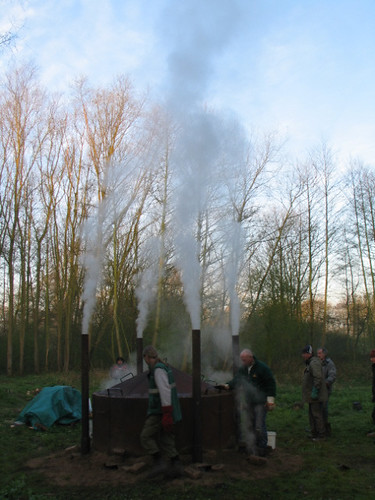
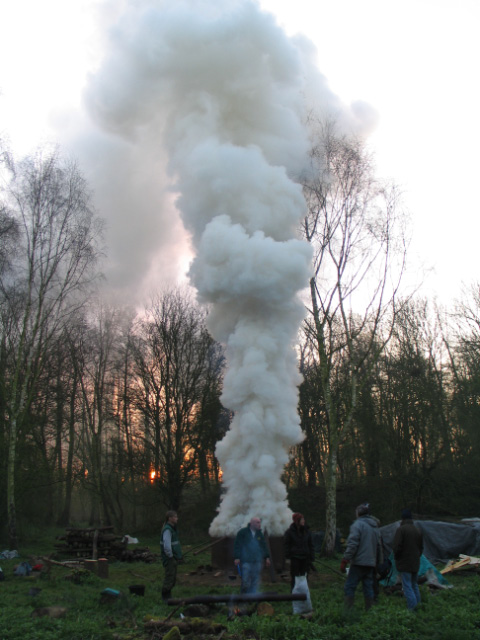
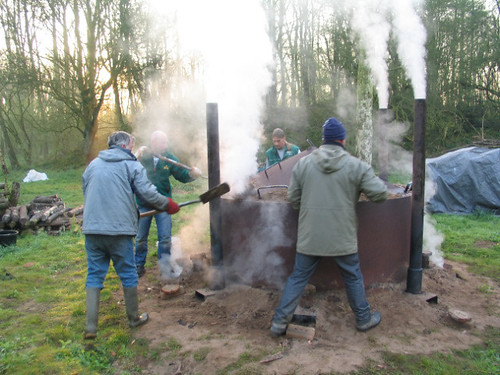
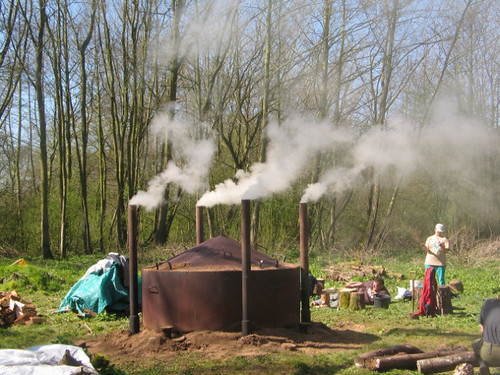
Once the kiln had been shut it's really a matter of keeping an eye open on the chimneys, but most of the time one can sit about, or get on with other work. I left around 7:30 just as the makings of an appetising breakfast appeared from someone's rucksack. By the time I returned after 11, the chill morning had gone. It was warm enough for the odd mozzie to be about, and those chopping wood had stripped off several layers. The kiln let off a steady stream of smoke and steam.
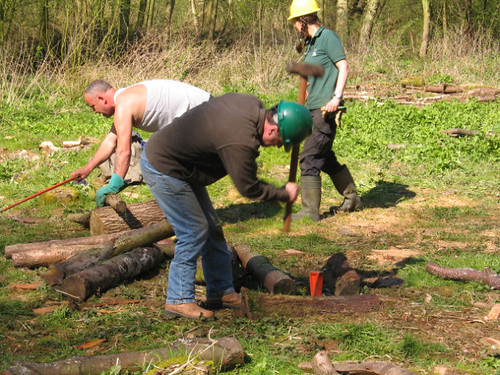
By mid-afternoon, most of the folk who had been throughout from early in the morning left. By 5 pm, we had difficulty controlling the draught in one of the chimneys. After fiddling about with closing and opening vents for a while, we decided that this was a similar state to when we'd shut the kiln down last year. So at around 17:40 we took the 4 chimneys down one by one, covered the vent, and piled sand over to block any airways into the kiln. A certain amount of smoke seeped out at the edge of the top of the kiln: presumably as the top cooled, the layer of sand no longer acted as a seal.
Sorry no 'photos of the last stages! We'll let the kiln cool down over a couple of days. Sandy sneaked a look under the lid a couple of days later. The picture shows the kiln on 3 days after we lit the fire, with sand still heaped round the chimney outlets.
The final 'photo shows the 'traditional' successful unloading of the charcoal.
This is probably the last for a while: we need to avoid the potential prolonged disturbance that a burn involves during the main breeding season for birds.